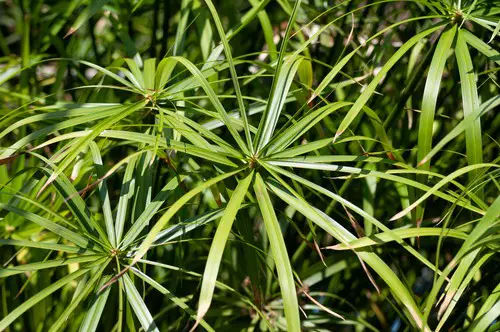Umbrella plants are a popular houseplant due to their ease of care and attractive foliage. However, sometimes these plants can start to show signs of decline, such as wilting or yellowing leaves, which can be concerning for plant owners. In some cases, these symptoms may indicate umbrella plant dying.
Recognizing the symptoms of a dying umbrella plant is the first step in determining the cause and finding a solution. Common causes of umbrella plant dying include improper watering, lack of sunlight, and pest or disease problems.
Additionally, potting issues and nutrient deficiencies can contribute to the decline of umbrella plants. Proper care, such as repotting and root care, as well as prevention and treatment strategies, can help keep umbrella plants healthy and thriving.
Key Takeaways
- Recognizing the symptoms of a dying umbrella plant is crucial in determining the cause and finding a solution.
- Common causes of umbrella plant dying include improper watering, lack of sunlight, and pest or disease problems.
- Proper care, such as repotting and root care, as well as prevention and treatment strategies, can help keep umbrella plants healthy and thriving.
Related posts:
Recognizing the Symptoms of a Dying Umbrella Plant
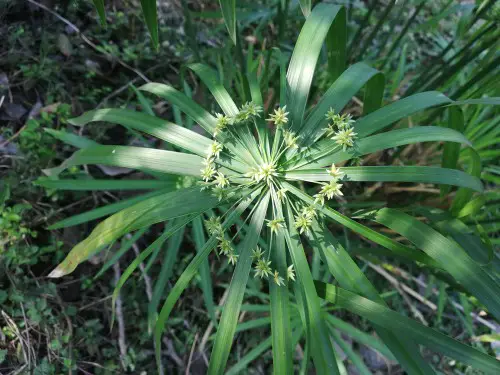
Umbrella plants are beautiful and easy-to-care-for houseplants that can thrive for many years with proper care. However, if they are not given the right growing conditions, they can start to show signs of distress and may eventually die.
In this section, we will discuss the most common symptoms of a dying umbrella plant and how to identify them.
1. Yellowing and Dropping Leaves
One of the most common symptoms of a dying umbrella plant is yellowing and dropping leaves. This can be caused by a variety of factors, including overwatering, underwatering, low humidity, and exposure to cold temperatures.
If the soil is too damp, the leaves may start to droop and turn yellow, whereas if the humidity is too low, the leaves may start to droop, turn brown, and drop off. To prevent this, make sure to water your umbrella plant only when the top inch of soil is dry and provide it with adequate humidity.
2. Black and Brown Spots
Another symptom of a dying umbrella plant is the appearance of black and brown spots on the leaves. This is often a sign of a fungal or bacterial infection, which can be caused by overwatering, poor air circulation, or high humidity.
To prevent this, make sure to water your plant only when the top inch of soil is dry and provide it with good air circulation.
3. Wilting and Drooping
Wilting and drooping are also common symptoms of a dying umbrella plant. This can be caused by a lack of water, exposure to direct sunlight, or exposure to cold temperatures. To prevent this, make sure to water your plant regularly and provide it with bright, indirect light.
Common Causes of Umbrella Plant Dying
Umbrella plants are popular indoor plants known for their lush foliage and easy maintenance. However, like any other plant, they can suffer from various issues that can cause them to wilt and die. In this section, we will discuss some common causes of umbrella plant dying and how to prevent them.
1. Overwatering and Underwatering

Overwatering and underwatering are two of the most common causes of umbrella plant dying. Overwatering can lead to root rot, which prevents the plant from absorbing nutrients and water properly. On the other hand, underwatering can cause the leaves to turn brown and crispy, eventually leading to leaf drop.
To prevent overwatering, make sure to let the soil dry out between watering and avoid leaving the plant in standing water. To prevent underwatering, make sure to water the plant regularly and keep the soil moist but not waterlogged.
2. Inappropriate Sunlight Exposure
Umbrella plants prefer bright, indirect sunlight, but too much direct sun can cause the leaves to burn and turn brown. On the other hand, too little sunlight can cause the plant to become leggy and weak.
To prevent inappropriate sunlight exposure, place the plant in a bright, well-lit area away from direct sunlight. If the plant is not getting enough light, consider using a grow light to supplement the natural light.
3. Temperature and Humidity Stress
Umbrella plants prefer warm, humid environments, and cold temperatures and low humidity can cause stress and damage to the plant. Cold temperatures can cause the leaves to turn brown and drop, while low humidity can cause the leaves to wilt and dry out.
To prevent temperature and humidity stress, make sure to keep the plant in a warm, humid environment, away from cold drafts and air conditioning. You can also increase humidity by misting the leaves or placing a humidifier near the plant.
By understanding and addressing these common causes of umbrella plant dying, you can ensure that your plant stays healthy and vibrant for years to come.
Disease and Pest Problems
Umbrella plants are susceptible to various diseases and pest infestations. It is essential to identify and address these problems as soon as possible to prevent any further damage to the plant. Here are some common issues that you may encounter:
Root Rot and Other Diseases
Overwatering and poor drainage can lead to root rot, which is a fungal disease that affects the roots of the plant. Symptoms of root rot include yellowing leaves, wilting, and stunted growth. To prevent root rot, ensure that the soil is well-draining and avoid overwatering.
Other common fungal diseases that can affect umbrella plants include anthracnose and bacterial spot. Anthracnose causes leaf spots and stem cankers, while bacterial spot results in leaf spots and stem rot. To treat these diseases, remove the affected leaves and stems and apply a fungicide as directed.
Pest Infestation

Umbrella plants can also be infested by various pests, including aphids, spider mites, scale insects, and mealybugs. These pests can cause damage to the leaves and stems of the plant and weaken it over time.
To treat pest infestations, use insecticidal soap or neem oil as directed. These products are effective in controlling pests without harming the plant. It is important to note that some pests, such as scales, may require more aggressive treatment, such as pruning or chemical insecticides.
Regularly inspecting your umbrella plant for any signs of disease or pest infestation and taking appropriate action can help keep it healthy and thriving.
Proper Care for Umbrella Plants
Umbrella plants are relatively easy to care for houseplants that can thrive in most indoor environments. Proper care is essential to keep them healthy and prevent them from dying. Here are some essential care tips to help you keep your umbrella plant healthy and thriving.
1. Watering and Temperature Requirements
Umbrella plants prefer to be kept in soil that is consistently moist but not waterlogged. Overwatering can lead to root rot, which can ultimately kill the plant. On the other hand, underwatering can cause the plant to wilt and die. It is essential to find the right balance.
The frequency of watering will depend on various factors, such as the size of the plant, the type of soil, and the humidity level. As a general rule of thumb, water the plant when the top inch of soil feels dry to the touch. During the winter months, reduce watering frequency as the plant’s growth slows down.
Umbrella plants prefer temperatures between 65°F and 75°F (18°C and 24°C). Avoid exposing them to sudden temperature changes, such as drafts from air conditioning or heating vents.
2. Nutrition and Fertilizer Needs
Umbrella plants require regular fertilization to remain healthy and grow to their full potential. Fertilize the plant once every two weeks during the growing season (spring and summer) using a balanced liquid fertilizer. Reduce the frequency of fertilization during the winter months when the plant is dormant.
3. Humidity and Lighting Preferences
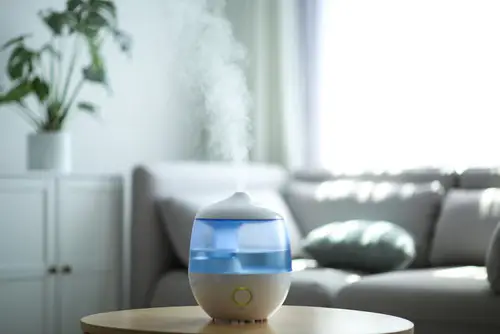
Umbrella plants thrive in high humidity environments. Mist the leaves regularly to increase the humidity around the plant. Alternatively, place a tray of water near the plant to increase the humidity level.
Umbrella plants prefer bright, indirect light. Direct sunlight can scorch the leaves, while too little light can cause the plant to become leggy and weak. Place the plant near a north or east-facing window for optimal growth.
Repotting and Root Care
When and How to Repot
Umbrella plants should be repotted every 2-3 years to ensure they have enough space for their roots to grow. Signs that your plant needs repotting include roots growing out of the drainage holes, the plant becoming top-heavy, or the soil drying out too quickly after watering.
To repot an umbrella plant, choose a pot that is one size larger than the current pot. Make sure the new pot has drainage holes to prevent water from accumulating and causing root rot. Fill the bottom of the new pot with fresh soil, leaving enough room for the root ball.
Carefully remove the plant from its old pot, gently loosen the roots, and remove any dead or damaged roots. Place the plant in the new pot and fill in the gaps with fresh soil. Water the plant thoroughly and place it in a bright, indirect light.
Caring for the Roots
Proper root care is essential for the health of an umbrella plant. These plants prefer to be slightly rootbound, so it’s important not to choose a pot that is too large. When watering, make sure the soil is evenly moist but not waterlogged. Overwatering can lead to root rot, which can be fatal for the plant.
If the plant is rootbound, it’s important to loosen the roots before repotting. Gently massage the root ball to loosen the roots and encourage new growth. If the roots are tightly packed, you may need to use a knife or scissors to make small cuts in the root ball to encourage new growth.
Prevention and Treatment Strategies
Preventing Common Problems
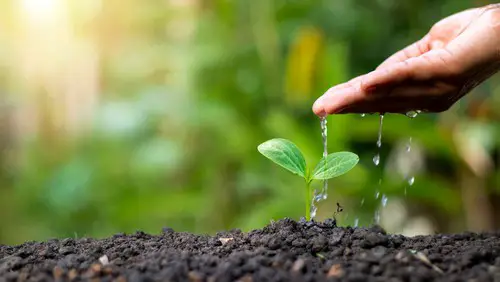
Preventing common problems is the first step in ensuring that your umbrella plant stays healthy. Here are some tips to help you avoid common issues:
- Location: Place the plant in a spot that receives bright, indirect light. Avoid direct sunlight as it can scorch the leaves.
- Soil Mix: Use a well-draining soil mix to prevent waterlogging and root rot. The soil should be moist but not mushy.
- Watering: Water the plant when the top inch of the soil feels dry. Avoid overwatering, which can lead to root rot and other issues.
- Humidity: Umbrella plants prefer high humidity levels. Use a humidifier or place a tray of pebbles and water under the plant to increase humidity levels.
- Temperature Range: Maintain a temperature range of 65°F to 75°F (18°C to 24°C). Avoid exposing the plant to low temperatures, which can cause damage to the leaves.
Treating a Dying Umbrella Plant
If your umbrella plant is dying, there are several things you can do to revive it. Here are some treatment strategies:
- Identify the Problem: Check for any signs of pests, diseases, or nutrient deficiencies. Fix any issues you find before proceeding with other treatments.
- Heat and Lighting: Place the plant in a warm, well-lit area to encourage photosynthesis. If the plant is not getting enough light, consider using artificial lighting.
- Moist Soil: If the soil is dry, water the plant thoroughly. If the soil is too wet, allow it to dry out before watering again.
- Excess Water: If the plant is suffering from root rot due to excess water, remove it from the pot and trim off any damaged roots. Repot the plant in fresh soil and water sparingly.
- Low Temperature: If the plant has been exposed to low temperatures, move it to a warmer area and avoid exposing it to cold drafts.
- Shade: If the plant is suffering from sunburn or leaf scorch, move it to a shadier spot and avoid exposing it to direct sunlight.
By following these prevention and treatment strategies, you can help ensure that your umbrella plant stays healthy and thrives in your home.
Propagation of Umbrella Plants
Umbrella plants are relatively easy to propagate. Propagation is the process of creating new plants from existing ones. This section will cover the basics of propagating umbrella plants.
Taking Cuttings
One way to propagate an umbrella plant is by taking cuttings. Cuttings are sections of a plant that are removed and then grown into a new plant. Here are the steps to take when taking cuttings from an umbrella plant:
- Select a healthy parent plant with no signs of disease or pests.
- Choose a stem that is at least 4 inches long and has several leaves.
- Cut the stem at a 45-degree angle using clean, sharp pruning shears.
- Remove the lower leaves from the stem, leaving only a few at the top.
- Dip the cut end of the stem in rooting hormone powder.
- Plant the stem in a pot filled with well-draining soil. Water the soil until it is moist but not waterlogged.
- Cover the pot with a plastic bag or a clear plastic container to create a humid environment.
- Place the pot in a warm, bright location but out of direct sunlight.
- Keep the soil moist but not waterlogged.
- After a few weeks, roots should start to form, and new growth should appear.
Successful Propagation

Propagation success depends on various factors, including the time of year, temperature, humidity, and light. Here are some tips to help ensure successful propagation of umbrella plants:
- Propagate in the spring or summer when the plant is actively growing.
- Keep the cutting warm and humid to encourage root growth.
- Provide bright, indirect light to the cutting, but avoid direct sunlight.
- Use well-draining soil to prevent waterlogging, which can cause root rot.
- Water the soil when it starts to dry out, but avoid overwatering.
- Fertilize the new plant with a balanced, water-soluble fertilizer once a month.
Toxicity of Umbrella Plants
Umbrella plants, also known as Schefflera plants, are popular houseplants due to their attractive foliage and ease of care. However, it is important to be aware of their potential hazards, particularly when it comes to toxicity.
Potential Hazards
Umbrella plants contain calcium oxalate crystals, which can cause irritation and swelling of the mouth, tongue, and throat if ingested. Ingestion may also lead to vomiting and diarrhea in both humans and pets.
Additionally, the sap of the umbrella plant may cause skin irritation and dermatitis upon contact. It is important to wear gloves and protective clothing when handling the plant, and to wash any exposed skin thoroughly with soap and water if contact occurs.
While umbrella plants are not typically fatal if ingested, it is important to seek medical attention if any symptoms of poisoning occur. It is also important to keep the plant out of reach of children and pets, and to supervise them when in the presence of the plant.
Frequently Asked Questions
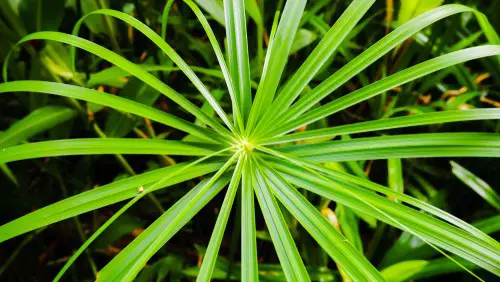
Why are the leaves on my umbrella plant turning brown?
There are a few reasons why the leaves on your umbrella plant may be turning brown. One possible cause is overwatering, which can lead to root rot and cause the leaves to turn brown and fall off.
Another possible cause is underwatering, which can cause the leaves to dry out and turn brown. Finally, the plant may be getting too much direct sunlight, which can cause the leaves to burn and turn brown.
What’s wrong with my umbrella plant?
If your umbrella plant is not looking healthy, it could be due to a number of factors. Some common issues include over or underwatering, too much direct sunlight, or exposure to cold temperatures. Additionally, pests like spider mites or mealybugs can also cause damage to the plant.
Why is my Schefflera stem turning brown?
If the stem of your Schefflera plant is turning brown, it could be a sign of root rot. This can happen if the plant is overwatered or if it is planted in soil that does not drain well. To prevent root rot, make sure the plant is not sitting in standing water and that the soil is well-draining.
Will umbrella plant leaves grow back?
If the leaves on your umbrella plant have fallen off or been damaged, new leaves will eventually grow back in their place.
However, it’s important to address the underlying issue that caused the leaves to fall off in the first place, such as over or underwatering, to prevent further damage to the plant.
Why is my umbrella plant dropping yellow leaves?
Yellow leaves on an umbrella plant can be a sign of several issues, including over or underwatering, exposure to cold temperatures, or pest infestations. It’s important to identify the underlying cause and address it in order to prevent further leaf loss.
Why is my umbrella plant stem turning brown?
A brown stem on an umbrella plant can be a sign of root rot or stem rot, which can be caused by overwatering or exposure to cold temperatures. To prevent further damage to the plant, make sure it is not sitting in standing water and that the soil is well-draining.

Hey, I’m Lisa and I’ve been an avid gardener for over 30 years. I love writing, talking and living in the garden! Feel free to connect with me on my socials below

